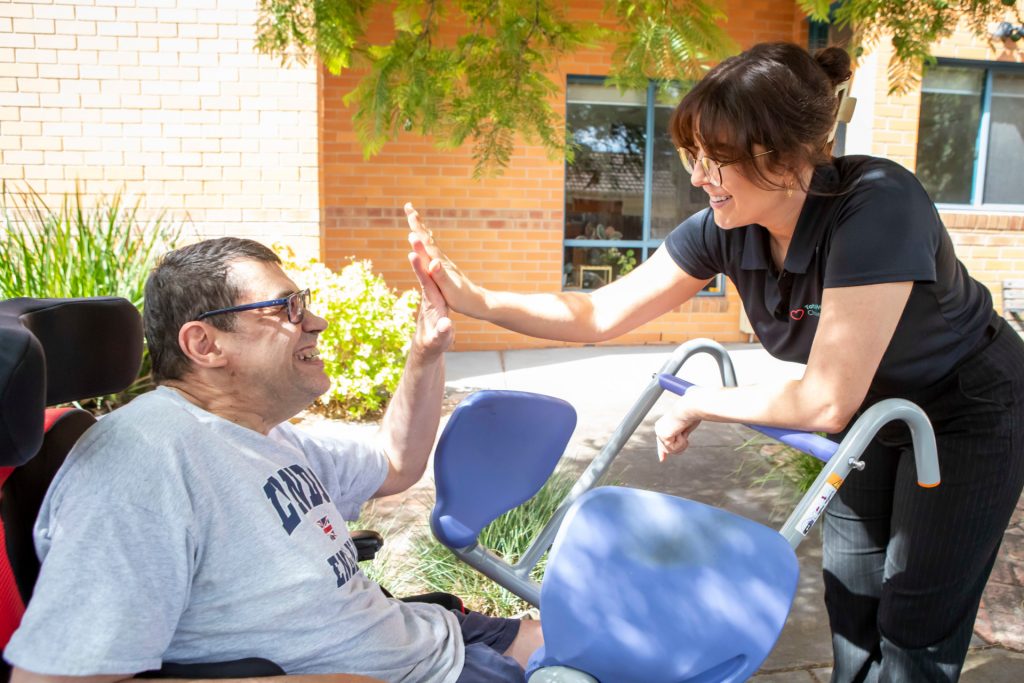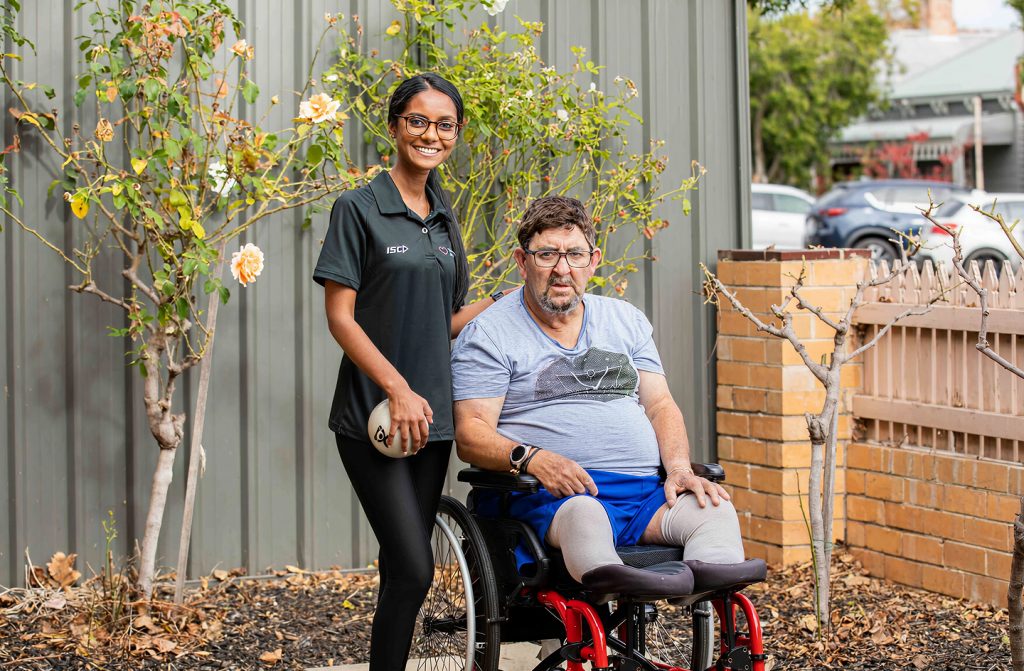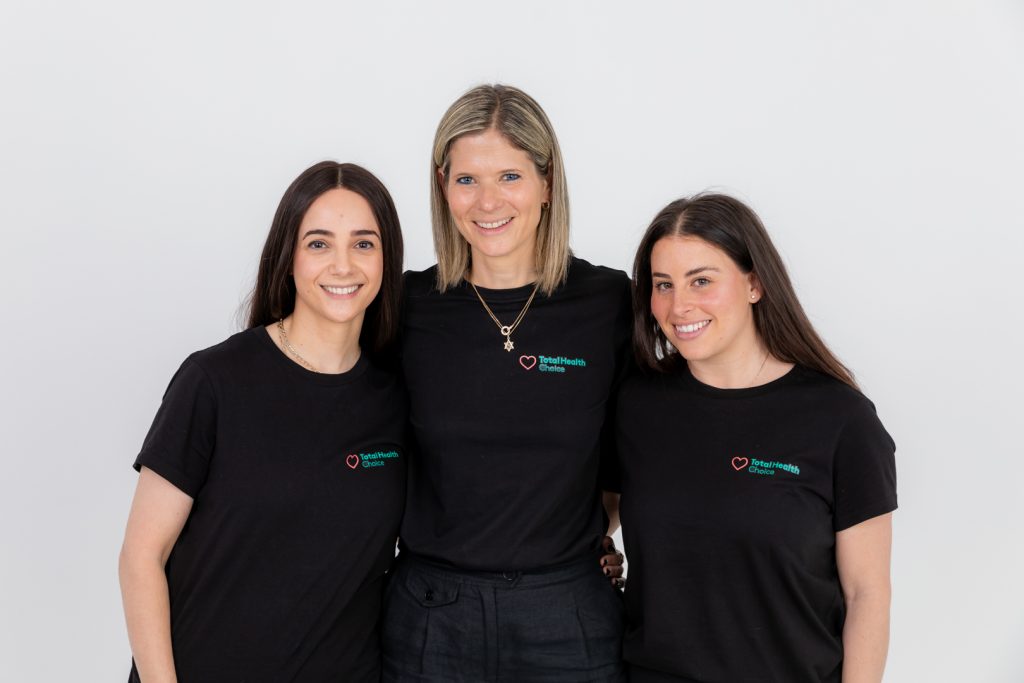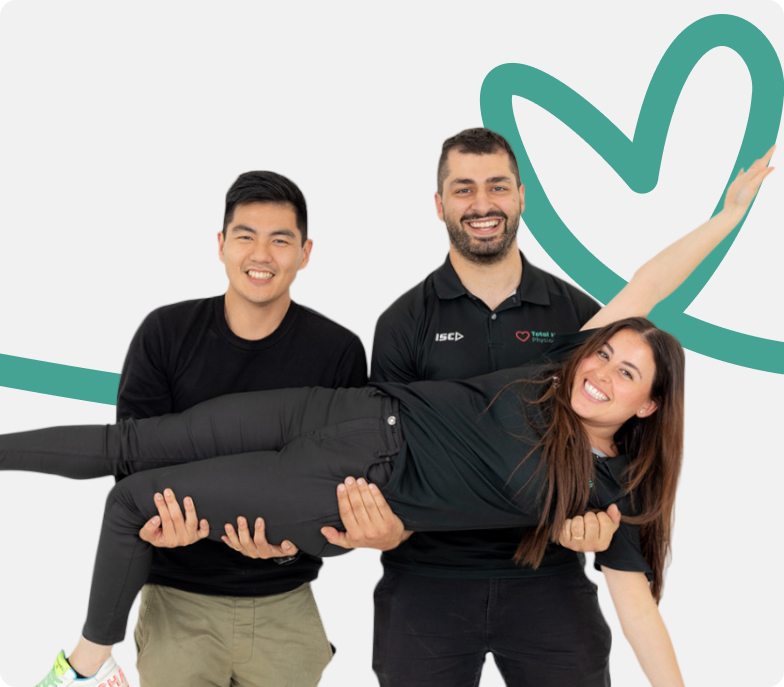Sensory profiling is a term for the measure of a person’s responses to sensory stimuli that occurs in daily life.
Occupational Therapists use sensory profiling to achieve a greater understanding of the way people react to their environment, so we can implement strategies and changes for people to live their safest, happiest and most independent lives!
Total Health Choice offers an elite sensory profiling service that is delivered by our compassionate Occupational Therapists, this is often combined with individualised support.
We are mobile across Melbourne and serve adults and teenagers (over 13) living with a disability.
Contact UsSensory Profiling Video
Who Requires Sensory Profiling?
Sensory Profiling is most commonly accessed by people living with neurological disorders, notably autism and cases of mental illness.
Sensory profiling identifies the patterns which may be contributing to a person’s barriers or performance in their daily life.
An example may be for someone who feels fatigue or discomfort in a busy room, then relief from this sensation when they enter a quiet, isolated room.
Sensory profiling takes into account all environments, such as home, work, school, university, transport or in the general community.
An Occupational Therapist would attend the locations of concern, to ideally, help that person establish strategies to help them in those situations.

What Happens During Sensory Profiling?
A clinician will visit your home or other location at a mutually beneficial time.
We will ask you a series of questions that assess a person’s sensory profiling patterns.
What are examples of questions in the Sensory Profile Assessment?
- I enjoy being close to people who wear perfume – true/false
- I trip or bump into things – true/false
- I like to go to places that have bright lights and that are colourful – true/false
- I don’t like particular food textures – true/false
- I avoid going to unfamiliar places or being around people I don’t know – true/false
- I have to ask people to repeat things – true/false

Who We Work With
Total Health Choice is a compassionate mobile healthcare provider in South-East Melbourne, Victoria. We visit people in their homes, however particularly for sensory profiling, our sessions may be out in the community together.
Our caring services can be accessed by NDIS participants who are self or plan-managing their NDIS plan.
Please contact us if you are not an NDIS participant and would like to enquire about this service.

The Benefits of Sensory Profiling for NDIS Participants
Undergoing a Sensory Profiling assessment with Total Health Choice’s mobile OT service offers numerous advantages:
1. Personalised Understanding: individuals gain insights into their unique sensory preferences and challenges, creating self-awareness and self-advocacy.
2. Targeted Interventions: Our OTs develop more effective, personalised treatment plans based on the individual’s sensory profile, right where you need them.
3. Improved Daily Functioning: By understanding sensory needs, individuals can make adjustments to their environment and routines to enhance comfort and productivity.
4. Enhanced Communication: The profile provides a common language for individuals, families, and our OTs to discuss sensory-related issues.
5. Early Intervention: Identifying sensory processing differences early can lead to timely support and prevent potential challenges from escalating.

Identifying Sensory Issues Through Profiling
Our amazing OTs can uncover a wide range of sensory processing patterns through Sensory Profiling, including:
- Hyper-responsivity (over-sensitivity) to sensory input
- Hypo-responsivity (under-sensitivity) to sensory stimuli
- Sensory seeking behaviours
- Poor sensory discrimination
- Difficulties with sensory integration
- Challenges in motor planning and execution
These patterns can manifest in various ways, from sensitivity to certain textures or sounds to difficulties with balance or body awareness. Our mobile service allows us to observe these patterns in real-life contexts.

Total Health Choice is Ready to Help
We are a great provider to consider because we really care, and see your goals as our goals!
- Our values are Trust, Compassion & Care
- Our OTs are in-house, university trained and highly professional
- We are NDIS registered
- There is no patient or case too small to matter
To book your sensory profiling, please use our contact or referrals pages to get in touch. We’d love to listen to your story!
Contact Us
Sensory Profiling FAQ
-
What senses does sensory profiling take into account?
There are 5 primary senses:
- Vision
- Hearing
- Smell
- Taste
- Touch
However, the amount of senses we have is constantly debated. There are many sensory cells that respond to physical stimuli, which are processed using different areas of the brain.
The definition of senses is best left to neurologists, however, here are some senses that fall outside the traditional five senses, examples include:
- Proprioception – the ability to perceive oneself in space
- Chemical senses – relating to hunger or pheromones, for example
- Nociception – relating to pain or pain thresholds
Total Health Choice is primarily concerned with the traditional senses when conducting sensory profiling.
-
Will I be required to simulate certain stimuli? Such as a person with autism who is overwhelmed by certain types of music, lighting, etc. How is this addressed safely?
No, the aim of the sensory profile is to identify hypersensitivity and provide strategies to overcome uncomfortable and unfamiliar environments through regular ongoing therapy.
The sensory profile will also identify sensory areas that are less stimulated and then develop strategies to increase exploration in these areas.
-
What are the common strategies or Assistive Technology THP will implement? What is the outcome of the session?
Each participant is different depending on the results.
The results may indicate certain techniques that can be provided to avoid overly sensitive environments in regards to promoting different behaviours.
The results may also include the recommendation of AT such as tinted glasses to help reduce bright environments or noise-cancelling headphones to reduce the surrounding noise.
-
Real-Life Impact: Sensory Profiling Success Stories
Here are two examples showcasing the power of Sensory Profiling conducted by our mobile OT team:
Case 1: A 7-year-old boy struggled with meltdowns and focusing in class. Sensory Profiling, conducted by our OT in his home and school environments, revealed auditory over-responsivity and tactile seeking behaviours. With targeted interventions, including noise cancelling headphones and fidget tools, his classroom behaviour and learning improved significantly.
Case 2: An adult with chronic pain discovered through Sensory Profiling, administered by our OT in her home, that she had proprioceptive under responsivity. Incorporating deep pressure techniques and weighted blankets into her routine led to improved body awareness and pain management.
-
What is The Total Health Choice Approach to Sensory Profiling
At Total Health Choice, our expertly trained OTs have developed a comprehensive, client centered approach to Sensory Profiling that they bring directly to you:
1. Initial Consultation: Our skilled OTs begin with a complete functional capacity assessment including, history, concerns, and goals in their home or preferred environment.
2. Standardised Assessments: We use validated tools such as the Sensory Profile-2 Child Caregiver Questionnaire or the Adolescent/Adult Sensory Profile to gather objective data. Our OTs are extensively trained in administering these assessments accurately.
3. Observational Assessment: Our therapists observe the participant in various environments and activities to see real-world sensory responses, taking full advantage of our mobile service model.
4. Collaborative Input: We gather information from family members, teachers, or caregivers to build a comprehensive picture.
5. Data Analysis: Our team carefully analyses all collected data to create a detailed sensory profile.
6. **Feedback Session**: We discuss the results with the client and/or caregivers, explaining findings and implications, all in the comfort of their chosen setting.


